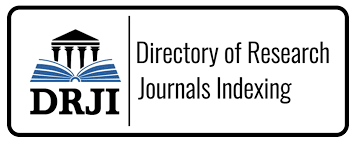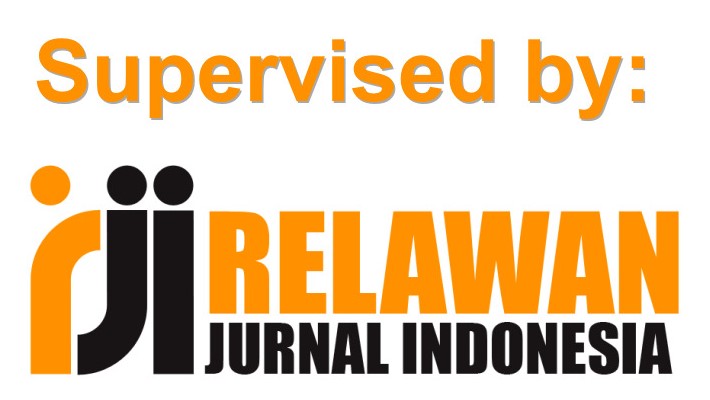Pengaruh Rasio Kemandirian dan Rasio Utang Pada Pendapatan Terhadap Keberlanjutan Keuangan Pada Pemerintah Provinsi di Pulau Sumatera
DOI:
https://doi.org/10.31851/2e4e0v53Keywords:
Rasio Kemandirian, Rasio Utang Pada Pendapatan, Keberlanjutan KeuanganAbstract
ABSTRAK
Penelitian ini dilakukan dengan tujuan untuk mengidentifikasi pengaruh Rasio Kemandirian dan Rasio Utang terhadap Pendapatan terhadap Keberlanjutan Keuangan Pemerintah Daerah di Pulau Sumatera. Populasi dalam penelitian ini adalah Laporan Keuangan Pemerintah Daerah (LKPD) dari 10 provinsi di Pulau Sumatera selama periode 2019–2023. Total sampel yang dianalisis sebanyak 50 data observasi. Metode analisis yang digunakan meliputi analisis regresi data panel dengan pengujian yang dilakukan menggunakan perangkat lunak Econometric Views (EViews) versi 12. Hasil penelitian menunjukkan bahwa Rasio Kemandirian secara parsial berpengaruh positif dan signifikan terhadap keberlanjutan keuangan, sementara Rasio Utang terhadap Pendapatan memiliki pengaruh negatif dan signifikan secara parsial. Secara simultan, kedua variabel tersebut terbukti berpengaruh signifikan terhadap keberlanjutan keuangan pemerintah daerah.
Kata Kunci: Rasio Kemandirian, Rasio Utang Pada Pendapatan, Keberlanjutan Keuangan.
ABSTRACT
This research was conducted with the aim of identifying the influence of Independence Ratio and Debt to Revenue Ratio on the Financial Sustainability of Local Government on Sumatra Island. The population in this study is the Regional Government Financial Report (LKPD) from 10 provinces in Sumatra Island during the 2019–2023 period. The total sample analyzed was 50 observation data. The analysis methods used include panel data regression analysis with tests carried out using Econometric Views (EViews) software version 12. The research results show that the Independence Ratio has a partial positive and significant effect on financial sustainability, while the Debt to Revenue Ratio has a partially negative and significant effect. Simultaneously, the two variables are proven to have a significant effect on the financial sustainability of the local government.
Keywords : Independence Ratio, Debt To Revenue Ratio, Financial Sustainability.
References
Al-Obaidi, M. B. M., & Almashhadani, A. N. (2023). Financial Sustainability Assessment in Iraq for The Period 2015-2021. Resmilitaris, 13(1), 758–767.
Aryasi, P. P., Periansya, P., & Dwitayanti, Y. (2023). Pengaruh Kemandirian, Efisiensi dan Kinerja Keuangan Terhadap Financial Sustainability Pada Pemerintah Daerah Kabupaten/Kota di Provinsi Sumatera Bagian Selatan. SEIKO : Journal of Management & Business, 6(2), 544–555.
Aulia. (2020). Goal Setting Theory Vs Reinforcement Theory: In RUH Perspective Theory. Seminar Nasional Magister Psikologi Universitas Ahmad Dahlan, 2012, 62–75.
Basuki & Prawoto. (2022). Analisis Regresi pada kajian Ekonomi & Bisnis: Dilengkapi Aplikasi SPSS dan Eviews (Monalisa (ed.); Edisi 2). Rajawali Pers.
Ernawati, B. P. P. (2024). Pengaruh IPM dan Kemandirian Keuangan Terhadap Financial Sustainability Pemerintah Kota Yogyakarta. 7, 76–81. https://doi.org/10.36815/prive.v7i1.3305
Frintrup, M., & Hilgers, D. (2023). Drivers and risk factors of German local financial sustainability focusing on adjusted income. International Review of Administrative Sciences, 90(1), 29–47. https://doi.org/10.1177/00208523221143289
Ghozali, I. (2018). Aplikasi Analisis Multivariate dengan Program IBM SPSS 25 (Edisi 9). Badan Penerbit Universitas Diponegoro.
Gleißner, W., Günther, T., & Walkshäusl, C. (2022). Financial sustainability: measurement and empirical evidence. In Journal of Business Economics (Vol. 92, Issue 3). Springer Berlin Heidelberg. https://doi.org/10.1007/s11573-022-01081-0
Khairunisa, D. R., Saftiana, Y., & Sari, R. (2024). Pengaruh Kemandirian Dan Efisiensi Keuangan Daerah Terhadap Keberlanjutan Keuangan Pada Kabupaten/Kota Di Provinsi Sumatera Selatan. Journal of Economic, Bussines and Accounting (COSTING), 7(4), 9152–9158. https://doi.org/10.31539/costing.v7i4.10488
Lhutfi & Sugiharti. (2022). Financial Sustainability of Local Governments in Indonesia. JURNAL ASET (AKUNTANSI RISET, 14(1), 159–170. https://doi.org/10.4324/9781003498230
Locke & Latham. (2006). New Directions In Goal-Setting Theory. CURRENT DIRECTIONS IN PSYCHOLOGICAL SCIENCE, 6(15–5), 265–268.
Mahmudi. (2019). Analisis Laporan Keuangan Pemerintah Daerah (4th ed.). UPP; STIM YKPN.
Nugroho, P. (2017). Analisis Atas Kemandirian Pemda Dalam Mengelola Keuangannya. Info Artha, 5, 93–106. https://doi.org/10.31092/jia.v5i1.64
Peraturan Pemerintah Republik Indonesia Nomor 12 Tahun 2019 Tentang Pengelolaan Keuangan Daerah.
Republik Indonesia. Undang- Undang Nomor 23 Tahun 2014 Tentang Pemerintahan Daerah.
Santis, S. (2020). The demographic and economic determinants of financial sustainability: An analysis of Italian local governments. Sustainability (Switzerland), 12(18). https://doi.org/10.3390/su12187599
Syahriyal, S., Abdullah, S., & Meutia, R. (2024). What Determines Financial Sustainability in Local Government? Evidence from Aceh Province, Indonesia. Riset Akuntansi Dan Keuangan Indonesia, 8(3), 261–274. https://doi.org/10.23917/reaksi.v8i3.3106
Trisna, T. B., Diswandi, & Nugraha, A. P. I. N. (2023). Determinants of Budget Transparency Toward Financial Sustainability. Russian Journal of Agricultural and Socio-Economic Sciences, 139(7), 98–113. https://doi.org/10.18551/rjoas.2023-07.11
Wardhani, D. T., & Payamta, P. (2020). Menguji Faktor Determinan Financial Sustainability pada Sektor Pemerintah. Jurnal Kajian Akuntansi, 4(1), 13. https://doi.org/10.33603/jka.v4i1.3305
Downloads
Published
Issue
Section
License
Copyright (c) 2025 Jurnal Media Wahana Ekonomika

This work is licensed under a Creative Commons Attribution-NonCommercial 4.0 International License.
The copyright of the received article shall be assigned to the publisher of the journal licensed under a Creative Commons Attribution-NonCommercial 4.0 International License in line with the license, authors and any users (readers and other researchers) are allowed to share and adapt the material only for non-commercial purposes. In addition, the material must be given appropriate credit, provided with a link to the license, and indicated if changes were made. If authors remix, transform or build upon the material, authors must distribute their contributions under the same license as the original.






















